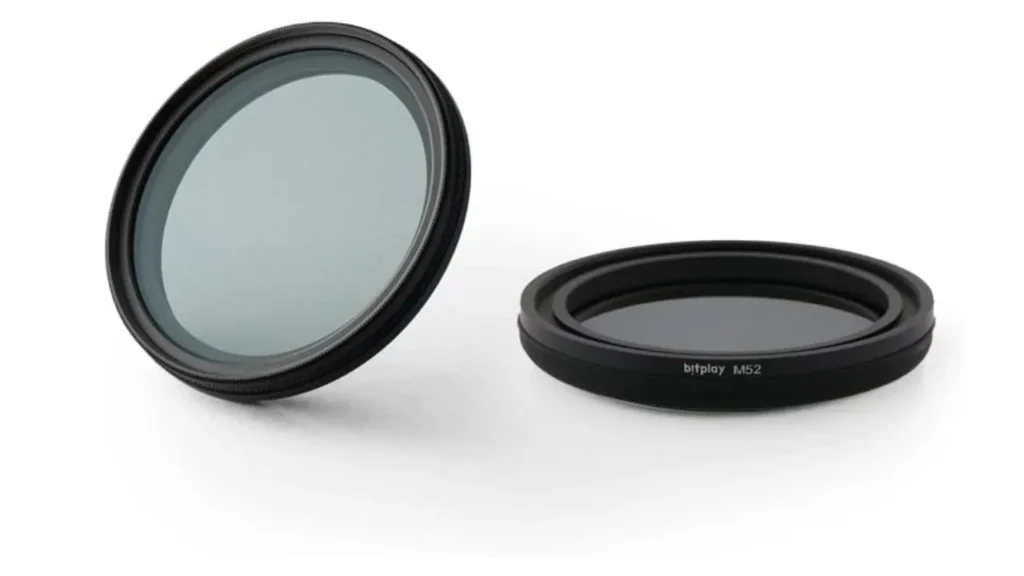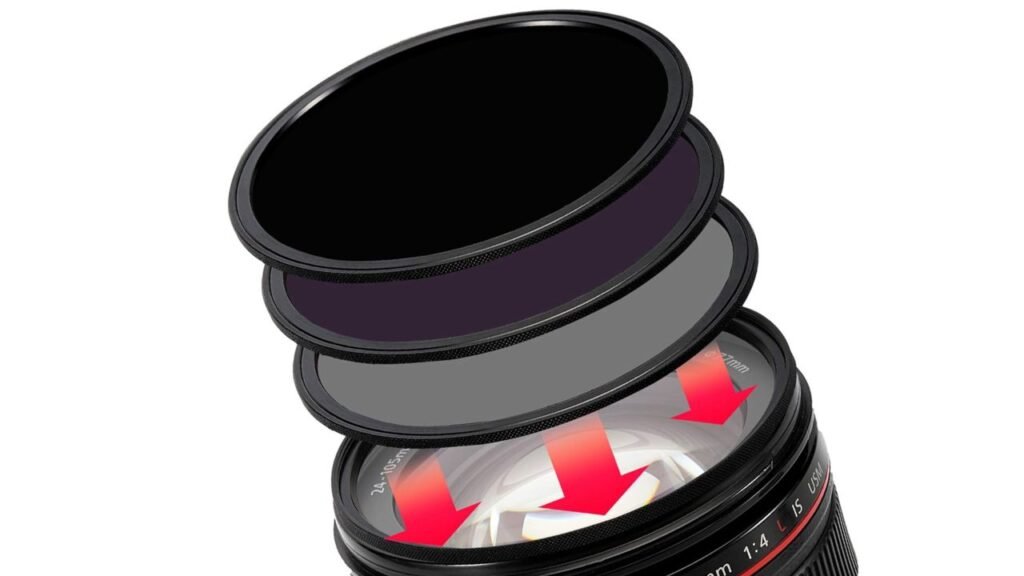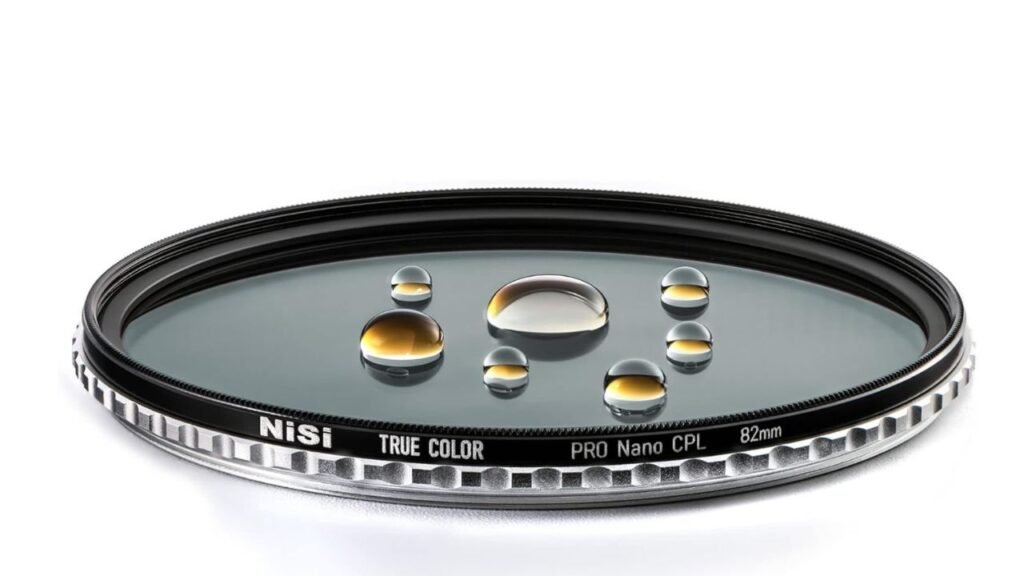A camera polarizer lens filter is an essential tool for photographers and videographers seeking to enhance the quality of their images. This specialized filter is designed to reduce glare and reflections by selectively blocking certain light waves. Doing so it helps to improve color saturation, increase contrast, and bring out the true beauty of a scene. The camera polarizer lens filter achieves this by utilizing a polarizing material that can be rotated to control the amount of polarized light entering the camera lens.
This enables photographers to capture stunning landscapes with vibrant skies, eliminate unwanted reflections on water or glass surfaces, and achieve overall sharper and more vibrant images. With its ability to enhance image quality and creative possibilities, the camera polarizer lens filter is an indispensable accessory for any serious photographer or filmmaker.
What Is A Camera Polarizer Lens Filter

A camera polarizer lens filter is a powerful tool that every photographer should consider adding to their gear. This specialized filter is designed to reduce glare and reflections, resulting in enhanced image quality and more vibrant colors. By selectively blocking certain light waves, the camera polarizer lens filter helps to improve color saturation, increase contrast, and bring out the true essence of a scene.
The camera polarizer lens filter achieves its effects by utilizing a polarizing material that can be rotated to control the amount of polarized light entering the camera lens. When shooting outdoors, this filter is beneficial for capturing stunning landscapes. It can deepen the blue of the sky, making it appear more vibrant and saturated. Additionally, it helps to minimize reflections on water or glass surfaces, allowing photographers to capture more precise and more detailed images. By reducing glare, the camera polarizer lens filter also enhances the overall sharpness and clarity of the photograph, resulting in professional-quality shots.
What Is The Use Of Polarizer In Lens
A polarizer in a camera lens, specifically the camera polarizer lens filter, serves a crucial purpose in photography. This specialized filter effectively reduces glare and reflections by selectively blocking certain light waves. It achieves this by utilizing a polarizing material that can be rotated to control the amount of polarized light entering the camera lens. The primary use of a polarizer in a camera lens is to enhance image quality and capture scenes with greater clarity, contrast, and color saturation.
One of the main benefits of using a polarizer in a camera lens is its ability to deepen the blue of the sky. By reducing atmospheric haze and minimizing scattered light, the polarizer filter brings out more vibrant hues in the sky. This is particularly advantageous when photographing landscapes or outdoor scenes where a captivating sky can significantly enhance the overall composition. Additionally, the polarizer filter is highly effective in minimizing reflections on non-metallic surfaces such as water or glass. It allows photographers to capture clear, unobstructed views of subjects beneath the surface of water bodies or behind glass windows, resulting in more engaging and visually pleasing images.
How To Match Polarizer Lens To Camera

Matching a polarizer lens to your camera involves a thoughtful process to ensure optimal performance and compatibility. Firstly, it’s crucial to identify the filter thread size of your camera lens, typically indicated by a symbol like ‘Ø’ followed by a number on the lens barrel. This denotes the diameter in millimeters. Once armed with this information, selecting a camera polarizer lens with a matching thread size ensures a seamless fit. An ill-fitting polarizer not only compromises its effectiveness but may also cause difficulties in mounting and removal.
Additionally, consider the type of camera system you own, as different cameras may have varying requirements for polarizers. For instance, mirrorless cameras and DSLRs might have distinct filter thread sizes, necessitating careful attention to specifications. It’s advisable to consult your camera’s manual or the manufacturer’s website for precise details. Investing in a high-quality camera polarizer lens that aligns with your equipment specifications ensures that you harness the full potential of this essential accessory, enhancing the overall quality of your photographic endeavors.
Advantage Of Camera Polarizer Lens

Reducing Glare and Reflections
A significant benefit of a polarizing filter, integral to a camera polarizer lens, is its remarkable ability to minimize glare and reflections. Particularly effective when capturing scenes with non-metallic surfaces like water or glass, the filter selectively blocks polarized light waves. This results in a substantial reduction in unwanted reflections, enhancing color saturation and contrast and delivering visually compelling and vibrant photographs.
Enhancing Image Clarity
Beyond glare reduction, a polarizing filter contributes to an overall improvement in image clarity. By mitigating atmospheric haze and minimizing reflections, the filter allows the camera to capture scenes with heightened detail and sharpness.
This advantage becomes significantly pronounced in outdoor photography, where challenging lighting conditions and natural elements can often detract from the visual impact of a photograph. Integrating a camera polarizer lens with a polarizing filter empowers photographers with a versatile tool that not only elevates the aesthetics of their images but also provides greater control over the final visual narrative.
Disadvantage Of Using Camera Polarizer Lens Filter
Reduced Available Light
One notable disadvantage of utilizing a camera polarizer lens is the reduction in available light. While the polarized filter effectively blocks certain light waves to enhance color saturation and reduce glare, it simultaneously limits the overall amount of light entering the camera. This reduction in light can pose challenges in low-light conditions, requiring longer exposure times. This limitation may impact the ability to capture fast-paced subjects or conduct handheld photography without introducing unwanted blurriness.
Uneven Polarization in Wide-Angle Shots
Another consideration revolves around potential uneven polarization in wide-angle shots. When employing a polarizer with an ultra-wide-angle lens, the filter may not uniformly affect the entire frame. This can result in unevenly polarized areas, leading to variations in color and contrast across the image. Photographers must be aware of this potential issue, carefully assessing the specific requirements of each shooting scenario to determine whether the advantages of a camera polarizer lens outweigh any potential drawbacks in achieving the desired visual consistency.
How Do I Know If My Lens Is Polarized?
Determining whether your lens is polarized involves a straightforward yet crucial process. Firstly, check for a polarizing filter on the lens itself. Many lenses, especially those designed for photography enthusiasts, may come with an integrated camera polarizer lens. Look for a filter ring that can be rotated manually, often accompanied by markings indicating polarization adjustments. This feature allows you to control the angle of polarization, optimizing it according to the specific shooting conditions.
If your lens doesn’t have a built-in polarizing filter, you can still use external filters. Threaded onto the lens, these filters enhance your control over reflections and glare. To identify whether an external filter is polarized, hold it up to a light source and rotate it. A polarizing filter typically darkens the scene as you turn it, indicating its effectiveness in reducing polarized light. By familiarizing yourself with these features and testing your lens with these methods, you can confidently determine if your camera lens is equipped with a polarizer and make the most of its advantages in various photography scenarios.
Read More: When Were Security Cameras Invented? Step-by-Step Guide
How to Choose a Polarizer Lens Filter
Choosing between linear and circular polarizer filters involves understanding your specific needs and equipment compatibility. While linear polarizers are effective, circular polarizers are often a preferable choice, offering versatility for various situations. It’s essential to note that circular polarizers are the standard choice for modern autofocus cameras, as they ensure the proper functioning of the camera’s autofocus and metering systems. Unless you have a specific requirement for a linear polarizer, a circular polarizer is generally the safer and more compatible option.
When selecting a circular polarizer, determining the filter’s diameter is crucial, and this depends on the lens you plan to use it with. Refer to the lens specifications to identify the correct filter size. Different lenses have varying filter sizes, such as the Canon EF 24-70mm f/2.8L II USM Lens with an 82mm filter size or the Nikon 200-500mm f/5.6E ED AF-S NIKKOR VR Lens with a 95mm filter size. It’s advisable to have a dedicated polarizer filter for each of the lenses you frequently use, even if they share the same filter size. Moreover, if you already use a filter holder for other filters like ND filters, ensure the chosen polarizer fits the holder. For example, the NiSi 100x100mm True Color Square Polarizer is compatible with filter holders supporting filters of 100mm width and 2mm thickness, providing a seamless integration into your existing filter setup.
Best Camera Polarizer Lens Filters
Choosing the best camera polarizer lens filters involves considering factors such as optical quality, compatibility and specific needs. Here are some top picks that photographers often like:
| Filter Name | Key Features |
| B+W XS-Pro Circular Polarizer | Ultra-slim design, multi-resistant coating |
| Hoya HD Circular Polarizer | High transparency polarizing film, water repellent |
| Tiffen Digital HT Polarizer | High-Trans Titanium coating, durable construction |
| Breakthrough Photography X4 CPL | Schott B270 optical glass, MRC16 coating |
Read More: How To Use A Polaroid Camera-Step By Step Guide
Conclusion
In conclusion, a camera polarizer lens filter is an indispensable tool for photographers, enhancing image quality by reducing glare and reflections. The choice between linear and circular polarizers depends on specific needs, with circular polarizers being the standard for modern autofocus cameras. Determining the filter diameter is crucial, ensuring compatibility with the lens.
While some lenses come with built-in polarizers, external filters offer control over reflections and glare. Despite the advantages of polarizers, drawbacks include reduced available light and potential uneven polarization in wide-angle shots. Choosing the best camera polarizer lens filters involves considerations like optical quality and compatibility, with top picks including B+W XS-Pro, Hoya HD, NiSi True Color Square, Tiffen, and Sigma WR filters.